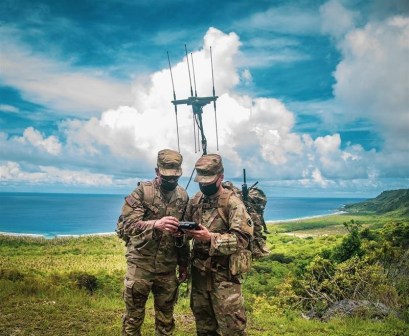Army’s multi-domain task forces in the Pacific will provide target development for the joint force

The Army’s multi-domain task forces in the Pacific theater will provide target development for the entire joint force in that region, according to a top general.
The task forces are designed to be in constant contact with adversaries during the so-called competition phase of conflict. They are capable of deep sensing and long-range precision fires. The so-called backbone of these task forces are their Multi-Domain Effects Battalions, formerly called I2CEWS because they include intelligence, information, cyber, electronic warfare and space capabilities and personnel.
The first MDTF was created in 2017 while the 3rd MDTF, also located in the Pacific, was just activated in late September. The other MDTF, activated last year, is based in Europe and focuses on that region. The fact that two of the Army’s three MDTFs are focused on the Pacific is reflective of the Defense Department’s prioritization of that region as it seeks to compete with China, which DOD views as the top military threat to the U.S.
“The Multi-Domain Task Force is the task force that is going to continue to do the target development for the joint force and it’s going to be able to fuse together information at speeds and then be able to share that with other joint assets and other joint capabilities, which puts the Army and the Multi-domain Task Force as a central and critical role in joint targeting,” Gen. Charles Flynn, commander of Army Pacific, said Wednesday during a presentation at AUSA’s annual convention in Washington. “The joint advances that are made by the Multi-Domain Task Force are critical in land contributions to the joint force for targeting.”
Others explained how the task forces seek to provide the maximum amount of dilemmas for the enemy while providing maximum capabilities for the joint force commander.
“We are inherently joint working for that joint force commander to neutralize portions of that into [the anti-access/area denial] network to enable that joint freedom of action,” said Brig. Gen. Bernard Harrington, commander of 1st MDTF.
The task forces provide additional tools to the joint force along with the other services.
“We bring increased capacity and complementary capability to the joint force in the Pacific. The analogy I think of is a collection of archers and a quiver of arrows,” Col. David Zinn, commander of 3rd MDTF, said. “The Navy archers, they have some Navy arrows, they can choose to release those arrows. Then the Air Force archers, well, they have some Air Force arrows. Our 1st Multi-Domain Task Force, they have some Army arrows in that quiver. What we bring, we bring our additional arrows to the quiver, that’s the increased capacity. And then our arrows have different effects and that’s the complementary capability that we bring.”
Flynn explained that the first task force was instrumental in allowing the Army to transform through its new doctrine — multi-domain operations — which became official this week. A complete rewrite to how the Army conducts ops — replacing Air-Land Battle that stemmed from the Vietnam War — the new doctrine describes combining and integrating land, air, maritime, space and cyber in all facets of operations.
“The important part here is that for the Army, it allows us an organization, the signature organization that is applying new capabilities against concepts, with doctrine and the combination of the organization, the capabilities, the process. And then the inclusion of the advanced type of capabilities that we have coming, is going to give us an edge globally,” Flynn said. “That’s particularly true, I think, in the Indo-Pacific because the geometry of that geography out there is part of the landscape that we have to deal with.”
Officials said that if an MDTF isn’t able to meet a need or requirement, they can pull in other organizations to augment their ability to achieve an effect at a certain time.
“What the Army has done, in this case, is package these capabilities in a single headquarters, single task force with space, cyber electromagnetic activities, all under the headquarters of a Multi-Domain Task Force, which is a little bit different than in some ways how any one of the organizations you talked about might operate,” Zinn told reporters at the conference.
As an ever present organization, the MDTF is constantly looking to break the networks of adversary systems and capabilities by using intelligence assets, long-range sensing, and kinetic and non-kinetic effects.
“As we look at our intelligence collection, we start looking at what elements of that A2/AD network can we potentially target in order to create a window of opportunity for the joint force commander to have freedom of action,” Harrington said.
For example, if an opponent’s surface vessel is operating somewhere in the South or East China Seas, “we do a detailed assessment of that adversary vessel and we look at what are those access vectors that we can use some of our long-range precision effects and look to disconnect that vessel from the rest of its A2/AD network, and seek to neutralize its capability of conducting the mission that it was given,” he said.






